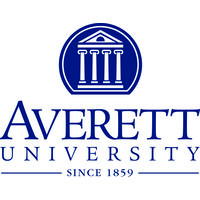What do they do?
Select and breed animals according to their genealogy, characteristics, and offspring. May require knowledge of artificial insemination techniques and equipment use. May involve keeping records on heats, birth intervals, or pedigree.
Also known as:
Animal Technician, Artificial Insemination Technician (AI Technician), Artificial Inseminator, Breeder, Cat Breeder, Dog Breeder, Equine Breeder, Horse Breeder, Large Herd Specialist
-
-4.8%
Change
Ranks #19 in job growth rate30Job Openings
Ranks #8 in net job growth
-
University of Kentucky
Lexington, KY
-
Feather River Community College District
Quincy, CA
-
Delaware Valley University
Doylestown, PA
-
University of New Hampshire-Main Campus
Durham, NH
-
SUNY Morrisville
Morrisville, NY
Looking for colleges that offer a specific major? Use the College Match Tool to find your best-matched schools and discover your estimated Net Price!
- Doctorate or Professional Degree (<1%)
- Master's degree (1%)
- Bachelor's degree (6%)
- Associate's degree (4%)
- Some college, no degree (11%)
- High school diploma equivalent (28%)
- Less than high school diploma (49%)
People in this career often know a lot about:
- Customer and Personal Service - Knowledge of principles and processes for providing customer and personal services. This includes customer needs assessment, meeting quality standards for services, and evaluation of customer satisfaction.
- Sales and Marketing - Knowledge of principles and methods for showing, promoting, and selling products or services. This includes marketing strategy and tactics, product demonstration, sales techniques, and sales control systems.
- Administration and Management - Knowledge of business and management principles involved in strategic planning, resource allocation, human resources modeling, leadership technique, production methods, and coordination of people and resources.
- Biology - Knowledge of plant and animal organisms, their tissues, cells, functions, interdependencies, and interactions with each other and the environment.
People in this career often do these activities:
- Clean equipment or facilities.
- Care for animals.
- Monitor animal behavior or condition.
- Perform animal breeding procedures.
- Communicate with other workers to coordinate activities.
- Treat animal injuries or illnesses.
- Sell agricultural products.
- Prepare materials or solutions for animal or plant use.
- Purchase products or services.
- Order medical supplies or equipment.
- Provide care for animals.
- Examine animals to detect illness, injury or other problems.
- Adjust building climate control systems.
- Build agricultural structures.
- Maintain operational records.
- Mark agricultural or forestry products for identification.
- Package agricultural products for shipment or further processing.
- Record agricultural or forestry inventory data.
- Promote agricultural or hunting activities.
- Remove skin or other body parts from animals.
This page includes data from:

 Occupation statistics: USDOL U.S. Bureau of Labor Statistics Occupational Employment Statistics
Occupation statistics: USDOL U.S. Bureau of Labor Statistics Occupational Employment Statistics









